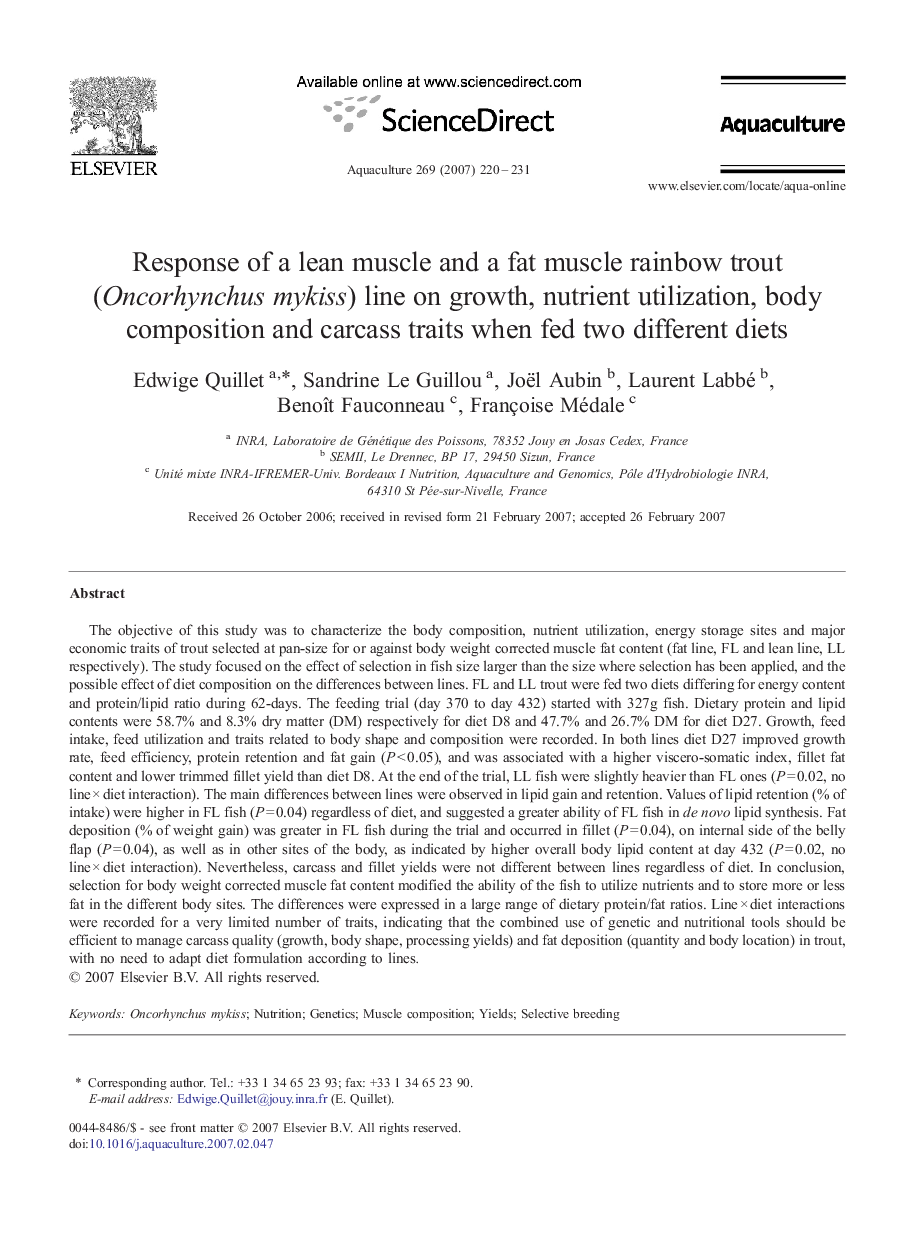| کد مقاله | کد نشریه | سال انتشار | مقاله انگلیسی | نسخه تمام متن |
|---|---|---|---|---|
| 2425276 | 1552973 | 2007 | 12 صفحه PDF | دانلود رایگان |

The objective of this study was to characterize the body composition, nutrient utilization, energy storage sites and major economic traits of trout selected at pan-size for or against body weight corrected muscle fat content (fat line, FL and lean line, LL respectively). The study focused on the effect of selection in fish size larger than the size where selection has been applied, and the possible effect of diet composition on the differences between lines. FL and LL trout were fed two diets differing for energy content and protein/lipid ratio during 62-days. The feeding trial (day 370 to day 432) started with 327g fish. Dietary protein and lipid contents were 58.7% and 8.3% dry matter (DM) respectively for diet D8 and 47.7% and 26.7% DM for diet D27. Growth, feed intake, feed utilization and traits related to body shape and composition were recorded. In both lines diet D27 improved growth rate, feed efficiency, protein retention and fat gain (P < 0.05), and was associated with a higher viscero-somatic index, fillet fat content and lower trimmed fillet yield than diet D8. At the end of the trial, LL fish were slightly heavier than FL ones (P = 0.02, no line × diet interaction). The main differences between lines were observed in lipid gain and retention. Values of lipid retention (% of intake) were higher in FL fish (P = 0.04) regardless of diet, and suggested a greater ability of FL fish in de novo lipid synthesis. Fat deposition (% of weight gain) was greater in FL fish during the trial and occurred in fillet (P = 0.04), on internal side of the belly flap (P = 0.04), as well as in other sites of the body, as indicated by higher overall body lipid content at day 432 (P = 0.02, no line × diet interaction). Nevertheless, carcass and fillet yields were not different between lines regardless of diet. In conclusion, selection for body weight corrected muscle fat content modified the ability of the fish to utilize nutrients and to store more or less fat in the different body sites. The differences were expressed in a large range of dietary protein/fat ratios. Line × diet interactions were recorded for a very limited number of traits, indicating that the combined use of genetic and nutritional tools should be efficient to manage carcass quality (growth, body shape, processing yields) and fat deposition (quantity and body location) in trout, with no need to adapt diet formulation according to lines.
Journal: Aquaculture - Volume 269, Issues 1–4, 14 September 2007, Pages 220–231